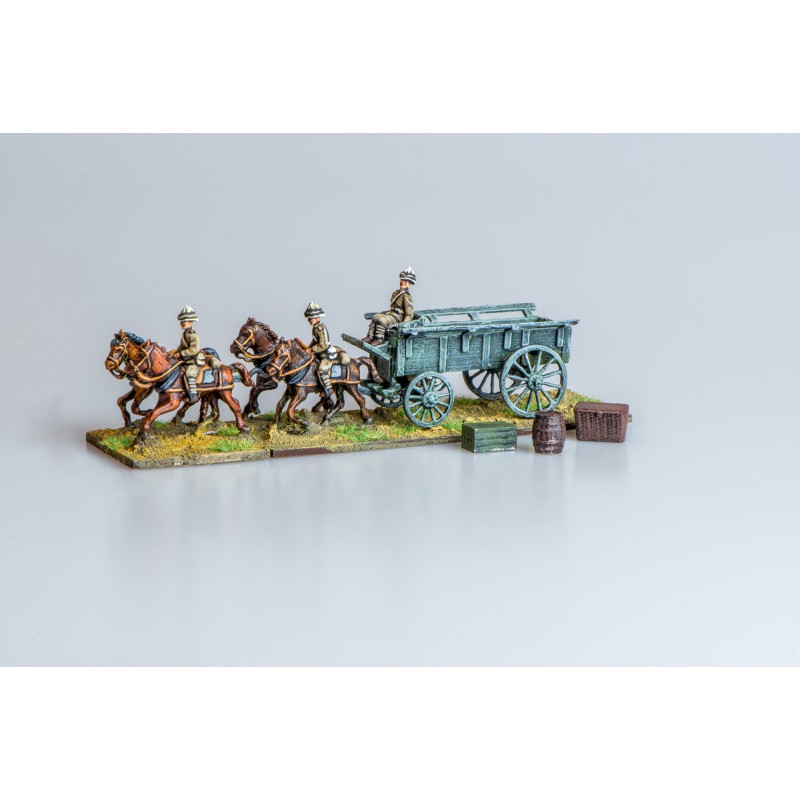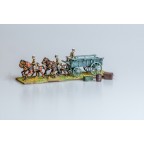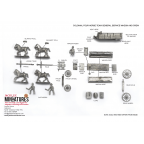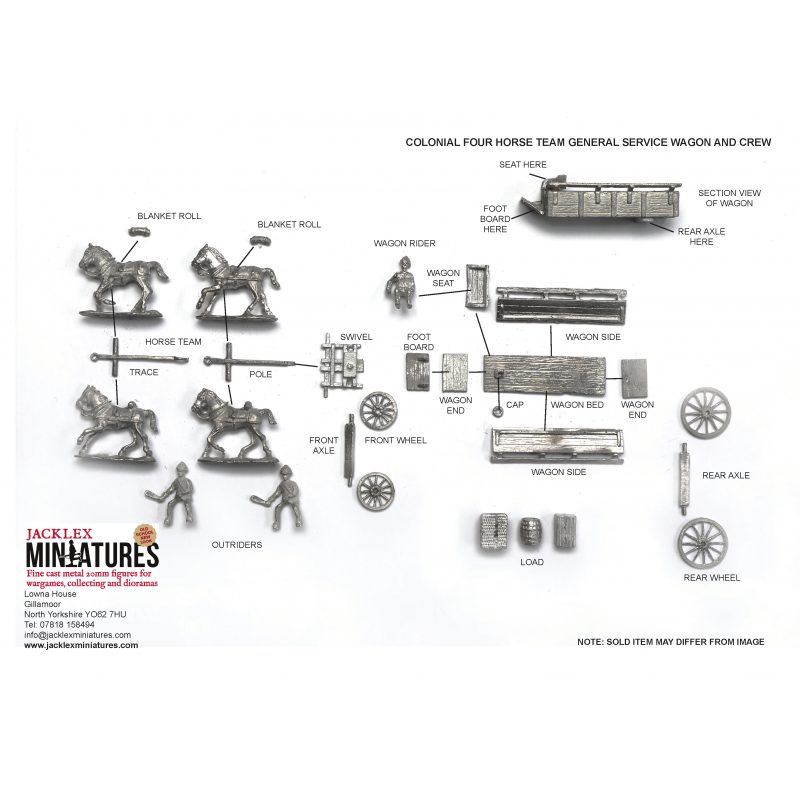This product is sold as an unpainted kit.
Additional Image.
1. Instruction Sheet. A copy of the sheet is supplied with the kit.
2-4. A lovely wagon and team from the collection of Roy Boss.
TRANSPORT AND LOGISTICS
‘Transport had to be effective if adequate logistical
support was to be guaranteed to the troops. A British battalion had nine tons
of basic impedimenta, which meant about 17 wagons and carts. In Zululand Lord
Chelmsford calculated he would need 1,800 tons of stores to supply 16,000 fighting
men for a 6-8 week campaign. His agents scouted South Africa and bought 977
wagons, 56 carts, 10,023 oxen, 803 horses and 398 mules, collecting 90% of the
transport beasts and vehicles in Natal. One officer was also sent to Texas to
buy 400 mules; others came from Cyprus, Spain and Italy.'
'Following Bugeaud, Lyautey preferred to load equipment on
mules rather than men – but this created a boom in mule prices. British
transport officers in upper Egypt in 1885 paid £16 for camels – up to twice the
usual price for beasts that were often old and sick – but when they could not
procure enough, they searched as far as Aden and Somalia. In the hunt for Morenga,
the Germans requested 1,000 camels for pack transport, while in Ethiopia in
1868 the British used no less than 41,723 transport animals – from donkeys to
elephants – to support 14,600 soldiers. For the Adowa campaign in 1896 the
Italians bought 8,200 camels and 3,000 mules in the space of two months.’
|
Loads
Carried |
|
|
Carrier |
In
lbs |
|
Porter |
40-50 |
|
An infantryman |
60 |
|
A
Foreign Legionnaire |
100 |
|
A mule |
200 |
|
A camel |
300 |
|
Heavy ox
wagon (good terrain) |
8,000 |
|
Heavy ox
wagon (bad terrain) |
2,000 |
|
A
railway freight car |
40,000 |
Ammunition and Weapons. 'An
infantryman cold carry 50-70 rounds per man, with more in an army ‘field
reserve’ (some 480 rounds per man in the Zulu War). The prodigious rate of fire
of modern weapons meant that these figures were really not high. The standard allowance
of 3,000 rounds for a Maxim, for instance allowed only five minutes’ continuous
fire. In 1899 the British in South Africa had stocks of only 200 rounds per
field gun, but 151,000,000 rifle cartridges (of which 44% were of the recently
banned ‘Dum Dum’ type) – ie a total of almost 2,000 per man.'
Source: Battle in Africa 1879-1914,
Howard Whitehouse, Field Books, 1987. One of, if not the best introductory book
I have read on the subject of campaigning and fighting in the colonial period.
A must for the wargamer.
Jacklex
Miniatures Colonial Nineteenth Century 20mm metal wargame figures.





-144x144.JPG)
%202-144x144.JPG)
%203-144x144.JPG)

-800x800.JPG)
%202-800x800.JPG)
%203-800x800.JPG)